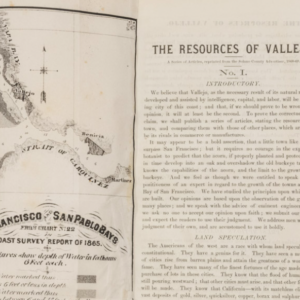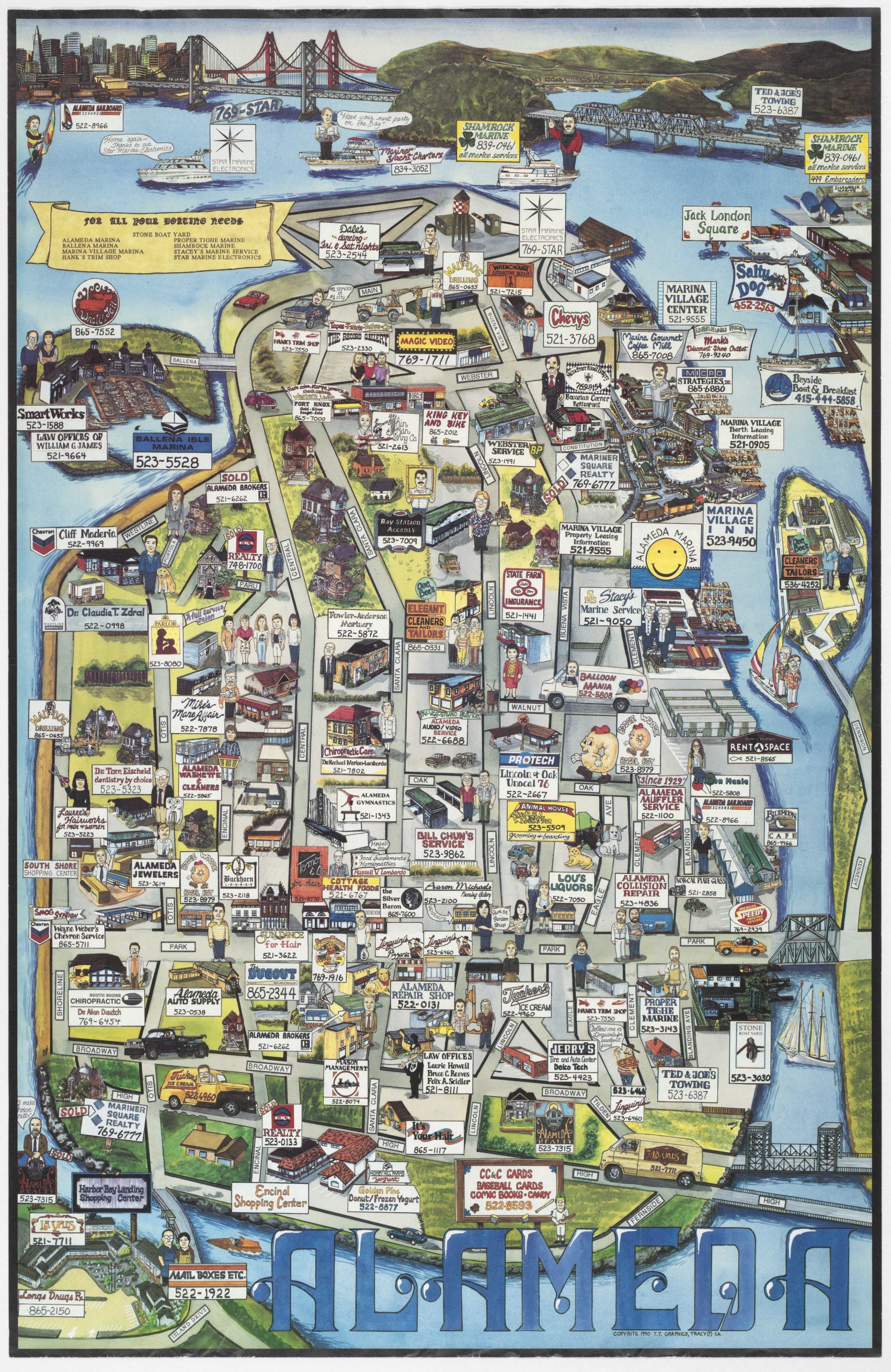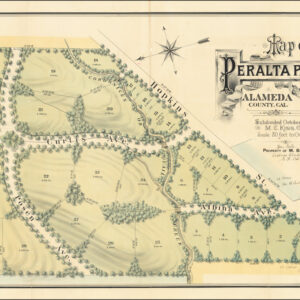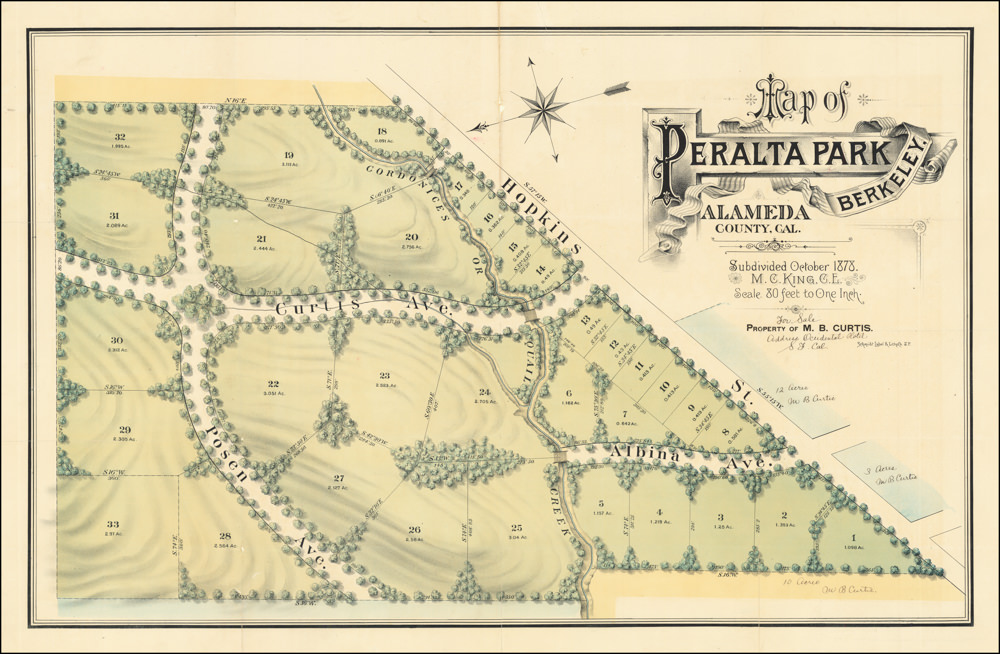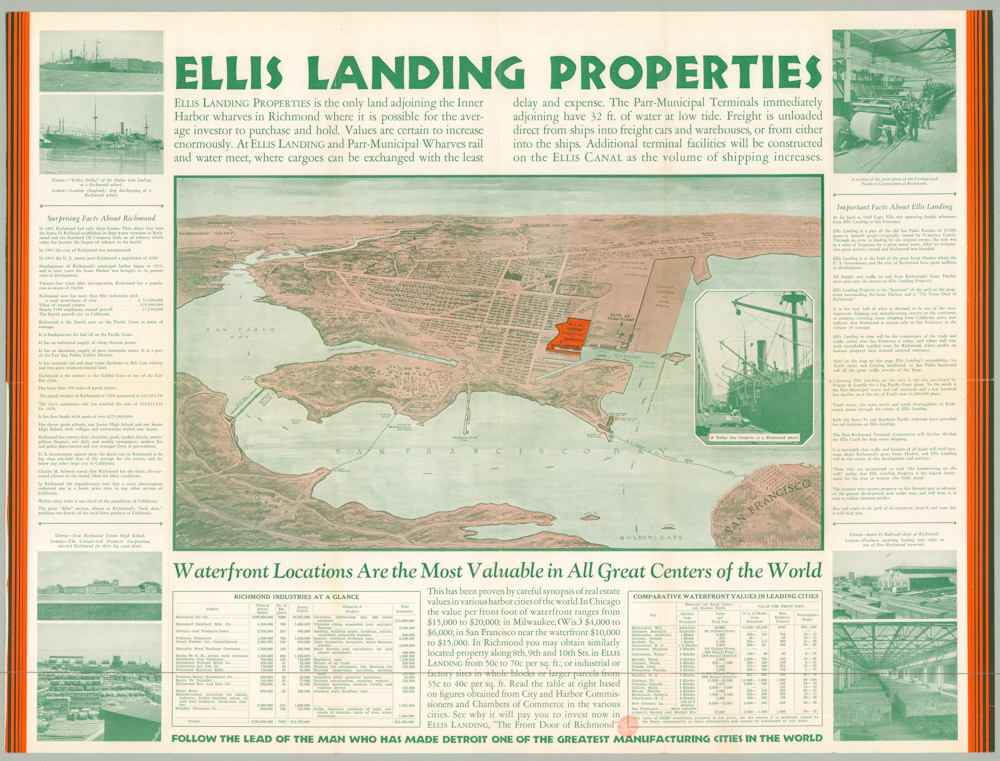Ringgold’s famous Gold Rush-era sea chart of the entrance to San Francisco Bay with an illustration of the Golden Gate trompe l’oeil.
General Chart Embracing Surveys of the Farallones Entrance to the Bay of San Francisco
Out of stock
Description
Sea chart of the Pacific coast and the Golden Gate. Of particular note is a profile view with a sailing ship near the entrance to San Francisco Bay.
For all its fame as a maritime city, Europeans first came to the area by land, not by sea. This is due in large part to treacherous waters and fog close to land, which induced early sea captains to keep their vessels far from the coast. But just as important is what this view demonstrates: the hills of the East Bay, along with Angel, Alcatraz, and Yerba Buena islands cause an optical illusion, filling-in the view of the Golden Gate from behind, thus giving the impression that the coast continues uninterrupted rather than opening to a large bay.
Cartographer(s):
Cadwalader Ringgold (August 20, 1802 – April 29, 1867) was an officer in the United States Navy who served in the United States Exploring Expedition, later headed an expedition to the Pacific Northwest and, after initially retiring, returned to service during the Civil War. During 1838–42, he was third in command of the United States Exploring Expedition in the Pacific, commanding Porpoise from 1840 at the invitation of the head of the project, Charles Wilkes. He carried out surveys of Antarctica, the South American coast, the Tuamotu Islands, Tonga, New Zealand and the Northwest Pacific coast of North America.
Ringgold was promoted to commander on July 16, 1849 and began the definitive survey of the San Francisco Bay region, suddenly important because of the discovery of gold in the area. Ringgold both built on previous surveys, most notably Frederick Beechey’s 1833 chart, and undertook a new series of triangulation and azimuth efforts, beginning at modern-day Pittsburgh, CA (then known as the ‘New York of the Pacific’). After the California surveys, Ringgold helped Navy officials choose a location for a dockyard for the Navy’s Pacific station. It later became the Mare Island Navy Yard.
In 1851, Ringgold published a series of charts, views, and sailing directions for the entrance to San Francisco Bay and the inland waterways of gold rush California. The charts paint an important picture of the region during a time of tremendous change.
Condition Description
Expertly laid on archival paper; left margin completed.
References
Woodbridge, p. 42-4; Cowan p.533; Howes R303; Kurutz 536e; Streeter 2679 (1st ed).
